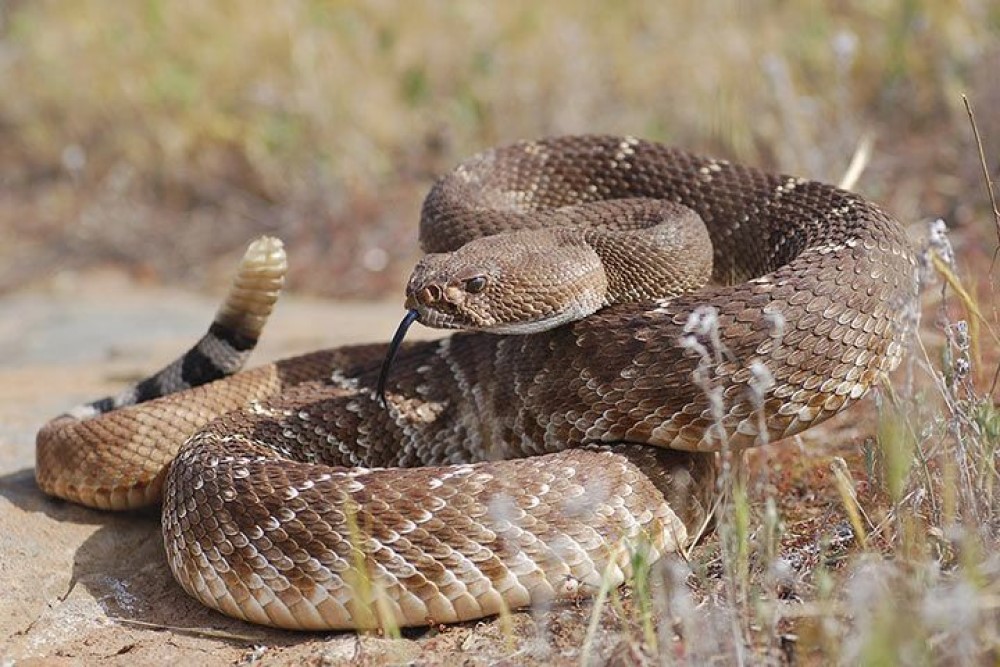Snakes that are venomous inject poison into their prey through their teeth to kill the victim. This is how they do it. These venoms have evolved over millions of years to have devastating effects on victims, from immobilization and bleeding to death. But What do you know about rattlesnakes? and Why is it the most poisonous snake in the US? Let’s explore it all with yeusnaker now!
The most poisonous snake in the US
The four varieties of deadliest snakes are copperheads, cottonmouths, coral snakes, and rattlesnakes. Every kind has a basic range: Rattlesnakes can be found practically everywhere, along with coral snakes in the South from Arizona to Florida, cottonmouths in the Southeast, and copperheads in the Eastern and Central States.
The most hazardous predators are rattlesnakes and cottonmouths, which constitute a serious menace to both animals and people. Both snakes are pit vipers, which are deadly snakes that may kill an adult with just 40 to 70 mg of venom after biting them. These snakes can detect body heat coming from their prey thanks to an indentation on their face located between their nostrils and eyes.
1. Rattlesnakes
The most poisonous snake in the US, rattlesnakes are located in the desert regions of the southwest and northwest of Mexico. The female rattlesnake is larger than the male, and they are silky, yellow-brown pink or ash gray in color. Adult rattlesnakes are 43–76 cm length. The majority of rattlesnakes are extremely venomous, and their venom can quickly paralyze their prey’s nervous system. A few minutes after being bitten, it then causes the victim’s heart to stop beating.
2. Cottonmouth
Cottonmouths are named for its large build, superior swimming ability, and open-mouthed defense, which resembles a large cotton ball. Although venomous, cottonmouth snakes are slow, not as swift and lethal as their own venom. Despite being awake throughout the day as well, they primarily go food hunting at night. They typically use stealth to track their prey or crawl to find food.
3. Coral Snake
The only snake more poisonous than coral snakes is the black mamba. They have tiny, feeble fangs. They are the only poisonous snake in North America that lays eggs. Some coral snakes have flattened tails that function as paddles in water. Its venom, which originates in the Southeast and is typically less than 30 inches long, can cause speech slurring, double vision, and muscle paralysis in humans, which, if ignored, can finally result in respiratory failure.
4. Copperhead
One of the most poisonous snakes in North America, copperheads frequently result in snakebites in the United States. This snake can adapt to a variety of habitats, including open forests, oases, and the edges of wetlands, thanks to its large geographic range. This snake’s venom contains a chemical known as hemotoxin that has the power to kill red blood cells. Few individuals have actually perished from being bitten by them, according to scientists, who estimate that it takes roughly 100 mg of venom to do so.
Types of Rattlesnakes
1. Eastern Diamondback Rattlesnake
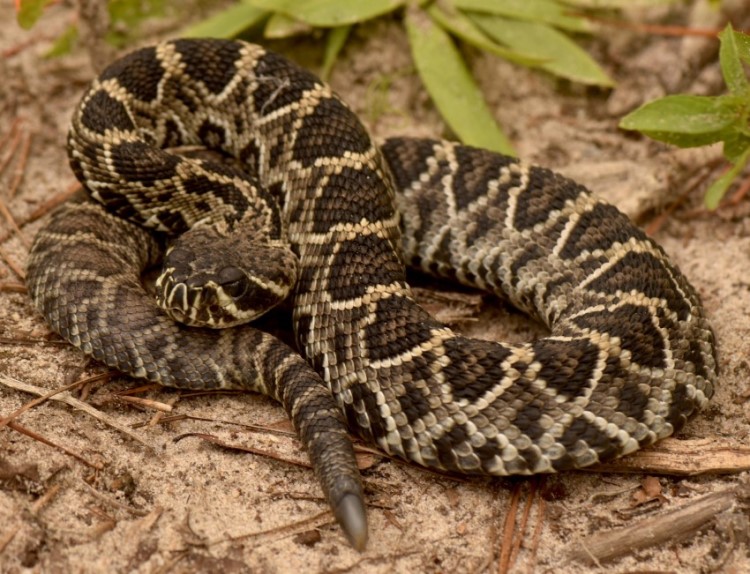
Eastern Diamondback Rattlesnake, which can grow to a length of 2.4 m and weigh between 2.3 and 6.7 kg, is the longest and heaviest venomous snake in North America. They have dark brown skin that has cream edging around black rhombus designs on their backs. The species that researcher Pierson Hill recently found in northern Florida is an outlier, though.
You’d better pray that there is some sort of glass between you and the most poisonous snake in the US if you can see vertical cat-like slits in its eyes. Red blood cells are destroyed by their venom, which also damages tissue in a very painful way. From shrubland and coastal forests to savannas, marsh borders, and even salt marshes, they predominate throughout the Southeast.
2. Western Diamondback Rattlesnake
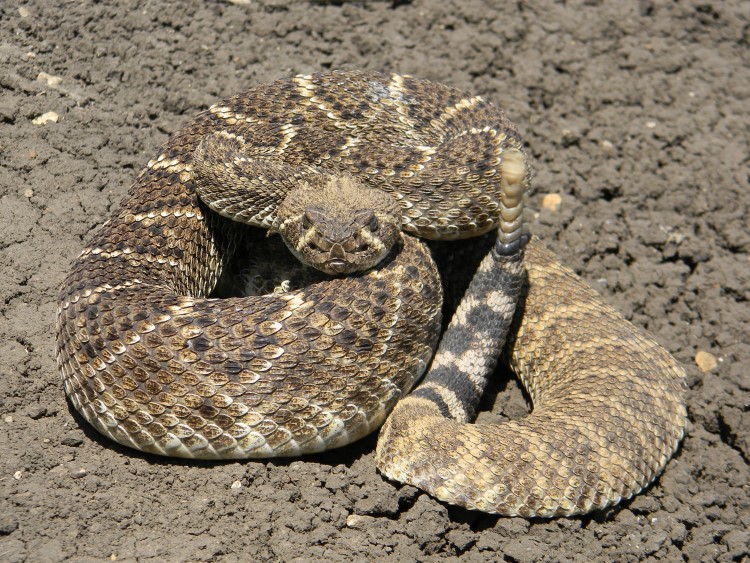
Southwest deserts provide a haven for the Western Diamondback Rattlesnake, which has a dependable population. In addition to the rattling, other distinctive features include the series of dark rings at the end of the tail and the diamond pattern on the back. Diamondbacks can reach a length of 7 feet and a weight of 15 pounds as adults. The majority of snake bites in the US occur from this species every year. It is also the most poisonous snake in the US for this reason.
Rattlesnakes with diamondbacks like to live in isolation and stay hidden from people. Only when they perceive a threat will they attack people. They hunt mostly at night, using their eyes and nostrils to find prey. Compared to other rattlesnakes, most diamond rattlesnakes have less poisonous venom. However, this venom is also sufficient to render the victim paralyzed and severely injured.
3. Mojave Rattlesnake
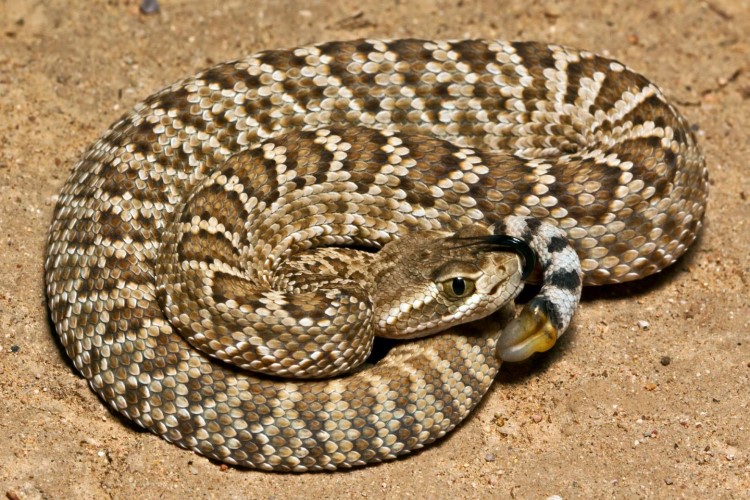
The Western Diamondback rattlesnake and the Mojave rattlesnake are both species of cobras, however the Mojave rattlesnake is a native of the deserts of the southwestern United States and central Mexico. Being smaller than other rattlesnakes and typically no longer than 3 feet, it is also the most poisonous snake in the US. This snake, which is nocturnal, is typically spotted by people in the early morning when it curls up under bushes or small trees.
Because of the way their coloring mimics that of their surroundings, mojave green rattlesnakes can be challenging to spot from a distance. In just one bite, the neurotoxins and hemorrhagic toxins found in snake venom can shut down your central nervous system and prevent blood clotting. This snake is extremely timid and prefers to hide from danger whenever it can, despite its terrifying reputation and lethal bite.
4. Timber Rattlesnake

An adult Timber Rattlesnake, which is mainly found in the eastern and central United States, can reach a maximum length of around 60 inches, however snakes as large as 74 inches and as heavy as over 10 pounds have also been recorded. The swaying structure at the end of the tail, for which it is named, is its most distinctive characteristic. These snakes feature horizontal dark brown or black stripes on a fawn or gray background on the dorsal side. The diagonal bands can be V- or M-shaped and have zigzag edges that aren’t straight.
Timber rattlesnakes, like the majority of rattlesnakes, use chemical signals to locate ambush spots for their victims. They frequently assault their target and follow them until they can be killed. Rattlesnakes are not aggressive, but if they feel threatened or startled, they will protect themselves. If you hear a rattle, you know you’re very close to this most poisonous snake in the US. This is also the time when you should pay attention to your next move.
5. Prairie Rattlesnake
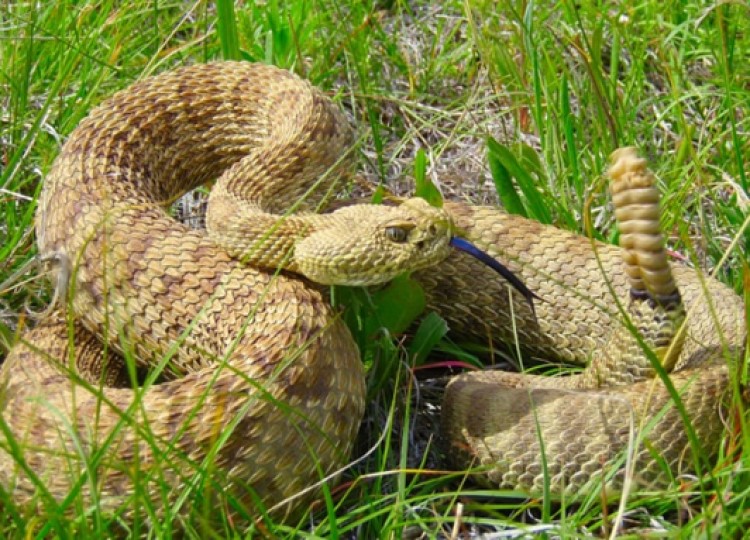
The Prairie Rattlesnake, as its name suggests, is primarily found in the middle of the United States, from Canada to Texas in the south and from Idaho to Iowa in the east. Snakes can reach lengths of 35 to 45 inches and are often greenish gray, olive green, or greenish brown, while some are light brown or yellow. The Prairie Rattlesnake has a huge triangular head, and its poison targets your nerve system without doing any damage to it. Despite the fact that they rarely endanger people, prairie snakes are extremely venomous and must be avoided for your protection.
And of course, Prairie Rattlesnake is also the most poisonous snake in the US. They inhabit a wide range of environments, including forests and savannas. They frequently snooze in nooks, burrows, and other hiding places when inactive. Ground squirrels, ground nesting birds, mice, rats, tiny rabbits, and prairie dogs are some of their preferred food sources. Similar to other rattlesnakes, the Prairie Rattlesnake quickly vibrates its tail while emitting a distinctive crunching sound to ward off intruders.
Conclusion
The rattlesnake is always rated as the most poisonous snake in the US and is one of the most dangerous snakes in the world today. The ability of their tail to generate sounds to hunt, threaten, or warn of danger is what sets them apart from other animals. You should also be cautious around other dangerous snakes. Recognizing venomous snakes is something you should know before you go on a visit to a jungle or mountain place.
Learn more:
The 5 most dangerous snakes on the planet

